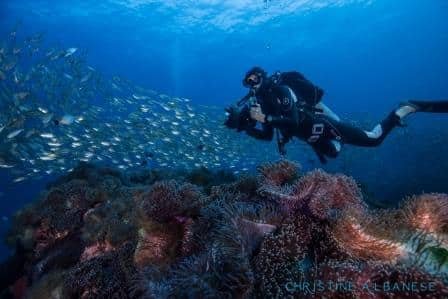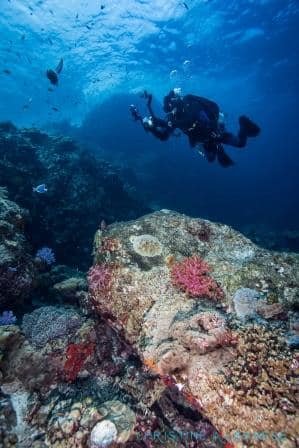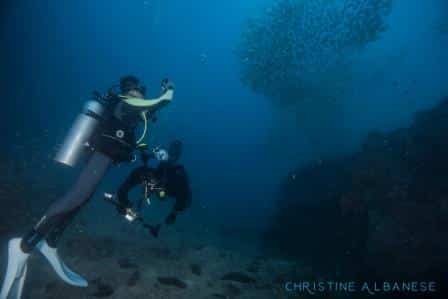“What kind of camera and equipment are you using?”
This is a question I get asked EVERY SINGLE DAY. Without fail. And while I am absolutely happy to answer and give the specifics of every single bit of equipment I have, I am always a little wary about who’s asking – particularly if the question comes from a novice diver or a student who is just about to complete their open water course. Sometimes, they are asking me simply out of curiosity, but most of the time they are asking because they are genuinely interested in underwater photography. And who wouldn’t be?

In this day and age, it is widely accessible and relatively cheap to own a camera that can be used underwater, so naturally most people want to take one along with them on their dives. However, several things happen when an inexperienced diver does this, whether they are taking a simple go pro, a compact camera or a whole DSLR rig (go big or go home, right?):
1. They start paying less attention to their instruments, particularly their dive computer and air pressure gauge.
2. They get distracted by fish they want to photograph and forget to check their depth and NDLs as they are chasing certain animals for their shots, sometimes ending up over 10 metres or more below or above their dive guide and group.
And the biggest problem I see:
3. Buoyancy gets thrown out the window and the safety of coral reef and marine life gets compromised.
Having a camera with you on your dives can be incredibly distracting because your attention shifts from concentrating on your diving skills/equipment/environment to complete focus on the camera and photo opportunities. Too many times I’ve seen divers with big camera rigs taking a photo of something while resting their fins on some nearby coral for stability… or even laying down entirely on a coral patch (yes, I have actually seen this). DON’T BE THAT GUY.

Corals take years/decades/centuries to grow! They are fragile animals that require our undivided attention and respect while diving. Also, erratic swimming tends to scare the fish off making them unapproachable to you and other divers… practicing good buoyancy is key to being a responsible and safe underwater photographer.
So… fresh out of your Open Water course? Really excited to start bringing your camera with you on your future dives? Then I will tell you what I tell every novice that asks about my camera gear: take a course on buoyancy and/or get a few fun dives under your belt where practicing your buoyancy is your primary focus during the dive. I promise it will go a long way and you will be much better prepared to handle a camera under water.
Because no one wants to be THAT guy… I promise you.

Just me – or any of the dive centre staff – for more information on buoyancy dives and courses, or for more details on underwater photography. We teach both PADI specialties, and tailor made courses to suit your needs 🙂